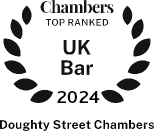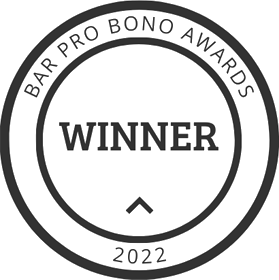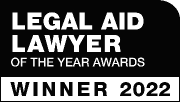Day 5: Where are all the Women?
Have you ever wondered where the names of London’s streets come from? Many of them give recognition to historical figures, but disappointingly few of these are women.
Doughty Street Chambers – and the #DoughtyStWomen - are proud to be based in Bloomsbury, with its rich history of inspirational women leaders from politics, law, journalism, and art. Within a few hundred metres of our chambers are buildings where the suffragettes built their campaigns, as well as the former home of the first woman barrister in England and Wales. Helena Normanton QC lived and worked a block north, on Mecklenburgh Square.
Yet the streets we walk every day are named instead for men: many of them wealthy landowners or benefactors whose public contribution stemmed principally from their wealth. Of the women honoured on our street signs now, many are profiled not in their own right but simply as the wives of historically high-profile men.
To celebrate International Women’s Day 2018, and the centenary of women’s suffrage, #DoughtyStWomen are reimagining our streets renamed. For eight days between 1 March and International Women’s Day on 8 March we are focussing on one of our local Bloomsbury streets, honouring eight of the leaders of the women’s suffrage movement who had connections in the area and who are too often forgotten.
Share these stories, follow us on social media and help us honour Bloomsbury’s inspirational feminist history.
#DoughtyStWomen #IWD2018
Day 1: 1 March 2018
Doughty Street became Lyons Street – read about Jane Lyons here.
Day 2: 2 March 2018
Guilford Street became Lawson Street – read about Marie Lawson here.
Day 3: 3 March 2018
Roger Street became Kerr Street. Read about Harriet Kerr here.
Day 4: 4 March 2018
Gray’s Inn Road became Singh Street. Read about Sophia Duleep Singh here.
Day 5: 5 March 2018
Today, Lamb’s Conduit Street becomes Haslam Street.
Lamb’s Conduit Street was named after William Lambe, a local benefactor who gave £1,500 for the rebuilding of the Holborn Conduit (an Elizabethan dam) in 1564.
Today, we imagine it renamed as Haslam Street, in honour of Dr Kate Haslam, a local suffragist in Bloomsbury.
Dr Haslam was a founder member of the Tax Resistance League, which was founded on 22 October 1909 to “conduct a campaign of constitutional militancy and organised resistance by women to taxation” (Elizabeth Crawford, The Women’s Suffrage Movement: A Reference Guide 1866 – 1928). Since 1870, a number of women had highlighted the anomalous position of women being subject to tax, but not having the vote – taxation without representation. The Tax Resistance League drew on this history, and on a longer tradition of tax resistance including that of John Hampden in the sixteenth century. He stood trial in 1637 for his refusal to be taxed for ship money and he was one of a number of Parliamentarians whose attempted unconstitutional arrest by King Charles I in the House of Commons sparked the Civil War.
The founding meeting of the Tax Resistance League in October 1909 was held at the invitation of Dr Louisa Garrett Anderson. Dr Haslam attended that first meeting, at which the simple slogan ‘No Vote, No Tax’ was agreed. By 1910 she was a committee member.
Dr Haslam’s name comes up repeatedly in coverage of the work of the Tax Resistance League, and it is clear she was an active and key member of the group throughout its lifetime, from 1909 to 1918. For example, the 6 July 2012 issue of The Vote (see more here) describes how the League “after some difficulty” were able to attend the unveiling of a statue of John Hampden at Aylesbury, and so “able to pay their last tribute to the great Tax Resister.” They laid a wreath of white flowers with black writing, “From Women Tax Resisters.” Dr Haslam was one of those reported to be present.
The Tax Resistance League’s basic premise was described by Beatrice Harraden in the New York Times in 1913 as follows:
“The least any woman can do is to refuse to pay taxes, especially the tax on actually earned income. This is certainly the most logical phase of the fight for suffrage. It is a culmination of the Government’s injustice and stupidity to ask that we pay an income tax on income earned by brains, when they are refusing to consider us eligible to vote.”







